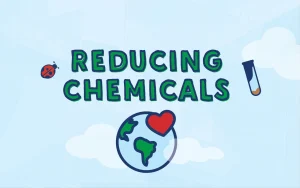Holistic Approaches to Pediatric Dental Care: More Than Just a Check-Up

Let’s be honest. For many parents, a trip to the dentist with a child feels like a minor victory if you just get through it without tears (from you or them). The focus is often on the immediate goal: a cavity-free report card. But what if we looked at your child’s dental health differently? What if it wasn’t just about teeth, but about their whole-body wellness?
That’s the heart of holistic pediatric dental care. It’s a philosophy that sees the mouth not as an isolated island, but as a connected part of a growing, dynamic system. It’s about prevention, yes, but it’s also about the connections between nutrition, environment, and even emotional well-being. Let’s dive in.
What Makes Kids’ Dental Care “Holistic,” Anyway?
You know how a small crack in a foundation can affect the entire house? Holistic dentistry views the mouth in a similar way. For children, whose bodies are developing at a breathtaking pace, this interconnectedness is especially powerful. It’s not just about treating problems; it’s about creating an environment where problems are less likely to start.
This approach considers the whole child. Their diet. Their breathing patterns during sleep. The materials used in their treatments. It asks “why” a cavity formed, not just “where.”
The Pillars of a Whole-Body Approach to Little Smiles
Nutrition as the First Line of Defense
Sure, we all know sugar is bad for teeth. But a holistic view goes deeper. It’s about the foods that build strong, resilient teeth from the inside out.
- Fat-Soluble Vitamins are Key: Vitamins A, D, and K2 (found in foods like grass-fed butter, egg yolks, and fermented foods) are crucial for guiding calcium into the teeth and bones, making them denser and more decay-resistant.
- Mineral Magic: A diet rich in calcium and phosphorus—think leafy greens, nuts, and quality dairy—provides the raw building blocks for enamel.
- Beyond the Sweet Stuff: It’s not just candy. Sticky, processed carbohydrates like crackers and cereal can linger on teeth, feeding the bacteria that cause cavities just as effectively.
The Low-Tox Environment: Materials Matter
This is a big one for holistic-minded parents. The question is: what are we putting in our children’s mouths during dental procedures?
Many holistic pediatric dentists take a more conservative stance. They may:
- Prefer BPA-free composite fillings over traditional silver amalgam fillings, which contain mercury.
- Use biocompatible materials for procedures like pulpotomies (baby root canals).
- Employ non-invasive diagnostic tools and prioritize methods that preserve as much healthy tooth structure as possible.
Airway and Oral Development: The Big Picture
This is a trend gaining serious traction, and for good reason. How a child breathes—through their nose or mouth—profoundly impacts the development of their entire facial structure.
Mouth breathing, often linked to issues like enlarged tonsils or allergies, can lead to a narrow palate, crowded teeth, and even long-term sleep issues. A holistic dentist is often the first to spot these red flags. They might look at:
- Tongue posture (is it resting on the roof of the mouth?).
- Lip seal (can your child comfortably close their lips?).
- Facial growth patterns.
They may collaborate with myofunctional therapists or ENTs to address the root cause, not just the dental symptoms.
Everyday Holistic Habits for Busy Families
Okay, this all sounds great, but how do you make it practical? Here are some simple, powerful shifts you can make at home.
| Traditional Focus | Holistic Shift |
| Brushing twice a day. | Brushing and flossing to disrupt cavity-causing biofilms. Using a soft-bristled brush to protect gums. |
| Avoiding sugary snacks. | Incorporating “tooth-friendly” snacks like cheese, apples, and carrots. Limiting juice and sticky foods. |
| Regular dental check-ups. | Choosing a dentist who discusses diet, airway, and overall development, not just cavities. |
| Using any fluoride toothpaste. | Making an informed choice about fluoride—whether it’s traditional, fluoride-free, or using hydroxyapatite, a biomimetic alternative. |
Addressing Common Concerns with a New Perspective
What About Fluoride?
Honestly, this is one of the biggest topics of discussion. The conventional view strongly supports fluoride for its proven cavity-fighting benefits. The holistic view often questions systemic ingestion (swallowing) in young children due to potential concerns about overexposure.
The key is informed consent. A good holistic dentist will discuss the risks and benefits of both fluoride and alternatives like nano-hydroxyapatite, which helps remineralize teeth by replenishing their natural building blocks. It’s about finding what aligns with your family’s health philosophy.
Preventing Cavities… Naturally
Beyond diet, think about the oral microbiome. It’s a whole little ecosystem in there. Disrupting the bacteria that cause cavities is the goal.
Xylitol, a natural sugar alcohol, can help. Found in some gums and toothpastes, it doesn’t feed bad bacteria and can actually reduce their ability to stick to teeth. A little can go a long way.
A Partnership for Healthier Futures
At its core, holistic pediatric dental care is a partnership. It’s a conversation between you, your child, and a dental team that sees the bigger picture. It’s understanding that the habits formed and the health established in these early years set the stage for a lifetime.
It’s not about achieving perfection. It’s about making more conscious, connected choices. It’s about viewing that little smile as a window into your child’s overall health and nurturing it, in every sense of the word. And that, well, that’s a philosophy worth smiling about.







